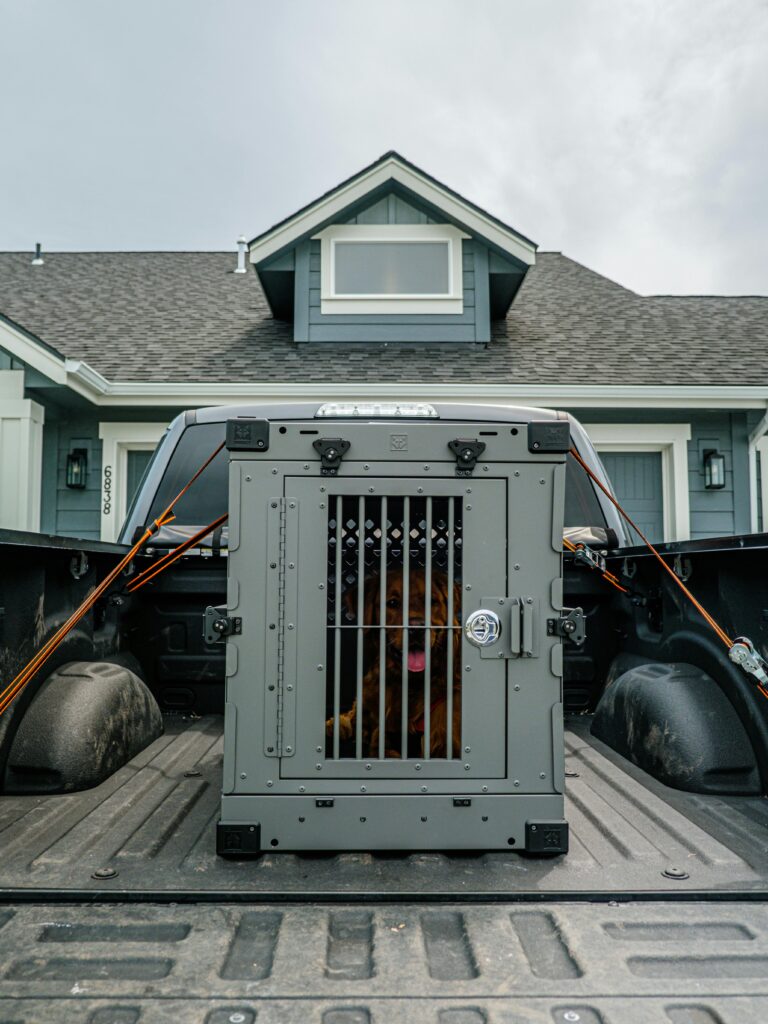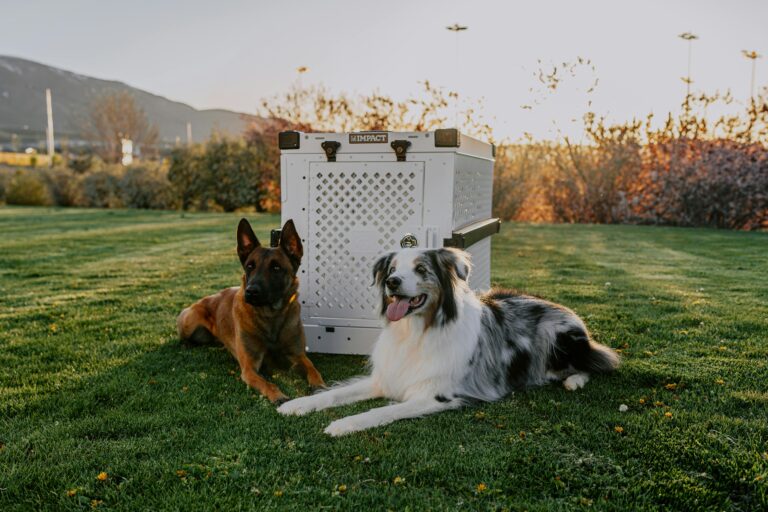When many owners hear the term “crate training,” they imagine confinement or punishment. In reality, a properly trained dog views the crate as their safe space. It is a place for rest, comfort, and structure, not a cage for misbehavior.
Crate training is one of the most valuable skills you can teach your dog. It sets the foundation for housebreaking, prevents destructive behaviors, and helps your dog learn independence. Most importantly, it creates a safe den-like environment that your dog will love.

Why Crate Training Matters
Dogs are naturally den animals. In the wild, canines seek enclosed spaces for protection and relaxation. A crate provides the same sense of security indoors.
Key benefits of crate training include:
- Housebreaking: Dogs typically avoid eliminating where they sleep.
- Safety: Prevents chewing hazards or dangerous behaviors when unsupervised.
- Travel: Makes car rides and vet visits less stressful.
- Calmness: Offers a retreat when the household feels chaotic.
- Independence: Helps reduce separation anxiety when used properly.
The crate is not about restricting freedom, it is about creating structure and consistency.
Common Misconceptions About Crates
Many owners resist crate training because of negative myths. Let’s set the record straight.
- “Crates are cruel.” In reality, crates give your dog a safe den to relax in.
- “My dog will hate the crate.” When introduced gradually, most dogs happily choose the crate for naps.
- “It’s only for puppies.” Adult and senior dogs also benefit from having a calm retreat.
- “Crates are punishment.” Crates should never be used as discipline. They should be a positive, comfortable space.
How to Introduce the Crate Positively
The key to crate success is creating positive associations. Start with short, rewarding sessions and gradually build time.
Step-by-step introduction:
- Place the crate in a common area with the door open.
- Toss treats or feed meals inside so your dog enters willingly.
- Use a command like “kennel” or “crate” when they go in.
- Close the door for short periods while you remain nearby.
- Slowly increase duration, always ending on a calm note.
Never shove your dog into the crate or leave them inside for excessive periods. Consistency and patience are essential.
Using the Crate in Everyday Life
Once your dog accepts the crate, it becomes a versatile tool. Use it for:
- Housebreaking puppies by taking them out immediately after naps.
- Calm downtime when kids are active in the house.
- Travel to keep your dog safe on road trips.
- Bedtime to ensure a restful night for everyone.
We often incorporate crate routines into our Basic Obedience Program because it teaches structure and self-control, both of which are key to long-term success.
Learn more about our Basic Obedience Program
Troubleshooting Common Problems
Whining or barking: Do not immediately let your dog out when they complain. Wait for calm before opening the door.
Reluctance to enter: Go back a step and make the crate rewarding with treats, toys, or feeding inside.
Accidents in the crate: Ensure the crate is the right size. It should be large enough for standing and turning, but not so big that your dog can potty in one corner and sleep in another.
If you are struggling, remember that patience and consistency are your best tools. For dogs with anxiety or resistance, professional guidance may be necessary.
Crate Training and Real-Life Applications
Crates aren’t just useful at home. They are vital for travel, hotel stays, and vet visits. For families who love to include their dogs in seasonal outings, crate training ensures safety in the car and calmness in new environments. For more on preparing your dog for travel, check out our blog on mastering travel skills at home.
Expert Resource: Crate Training Puppies
The American Kennel Club offers practical advice on crate training puppies. Their guide provides additional tips for making the crate a safe, welcoming space that supports your dog’s development.
Final Thoughts
Crate training is not about punishment. It is about providing your dog with structure, safety, and comfort. With patience and consistency, your dog will learn to see the crate as their den, not a cage. It will become one of the most valuable tools in your household.
Ready to make crate training part of your dog’s success story? We can help you every step of the way.
Contact our Dayton training team today and give your dog the confidence they deserve.
Would you like a certified trainer to contact you?

